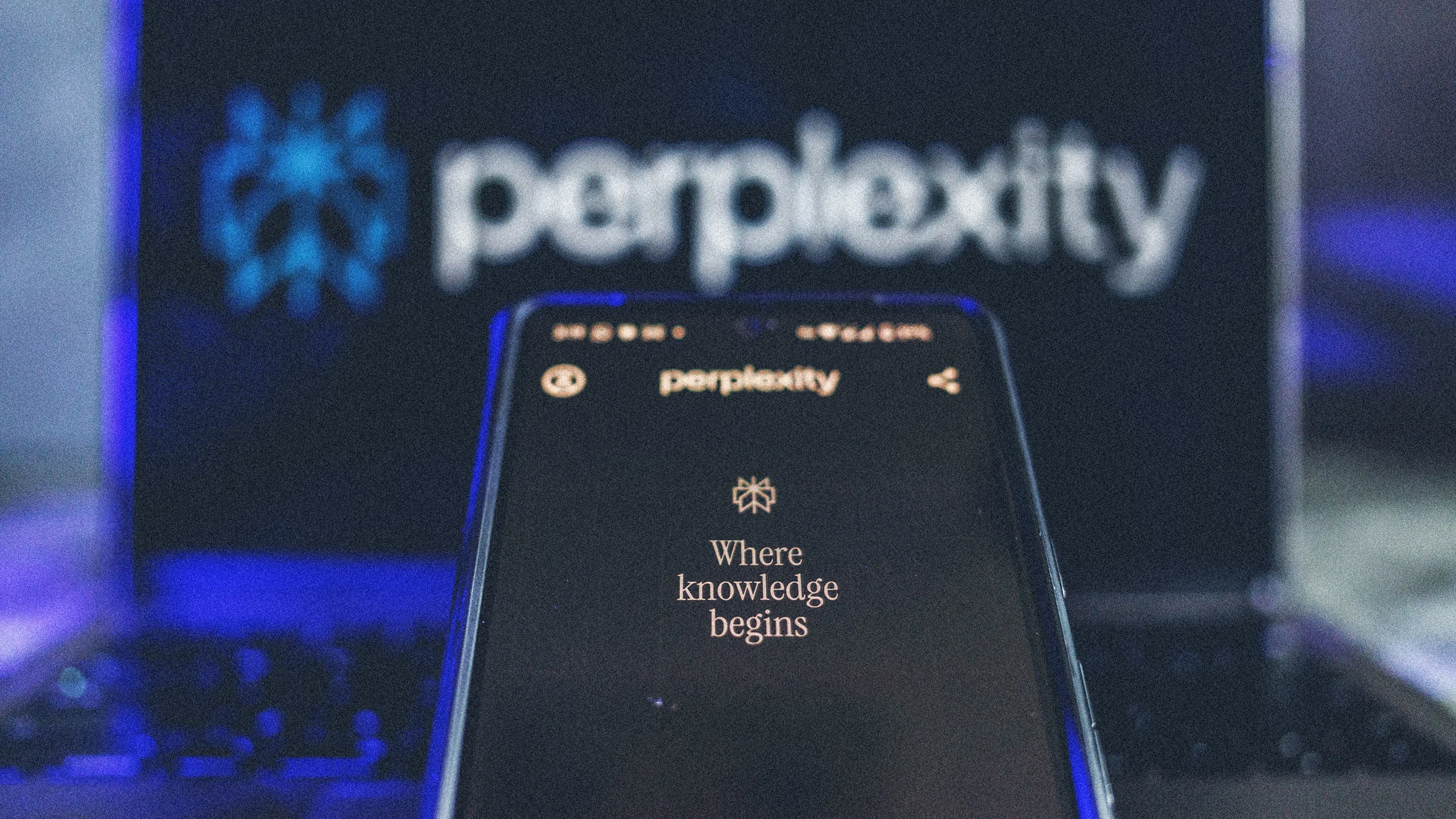Here is a concise summary of the news article: Orange Belgium has announced a new Management Services Agreement (MSA) with Orange SA, replacing the previous Strategic Partnership Agreement that expired on December 31, 2024. The new agreement covers management services-oriented activities and includes a cross-charge of management fees based on Orange SA's costs and Orange Belgium's annual external turnover. An independent expert assessed the arm's length character of the new management fee structure, and the board of directors approved the agreement after considering the expert's opinion and the company's auditor's assessment. The total service fee charged by Orange SA to Orange Belgium will not exceed EUR 15.4 million per annum for three years.
Read full article
July 24, 2025 • By Adamya Sharma
A recent APK teardown of the Google Phone app has revealed a new feature called "Call Message," which is an AI-powered voicemail system. This feature allows the phone to take messages for missed or declined calls, filter out spam calls, transcribe, and summarize messages in real-time, all without needing an internet connection. The feature is expected to debut as a Pixel 10 exclusive, but may be rolled out to other Pixel devices later. Call Message is similar to Apple's Live Voicemail feature, but with the added ability to provide summaries of messages. The feature relies on Gemini Nano, a technology only available on select devices, which suggests that Google may showcase it as part of the Pixel 10's exclusive AI experience.

July 24, 2025 • By Doug Aamoth
The article introduces Perplexity, a next-generation search engine that functions as an "answer engine" rather than a traditional search engine. Unlike AI chatbots like Gemini, ChatGPT, and Microsoft Copilot, which generate text based on training data, Perplexity provides accurate, sourced answers to questions by searching the internet in real-time. It is designed for research and fact-finding, summarizing and synthesizing information from across the web, and citing sources. Perplexity offers a free version with powerful source filters, allowing users to search the web, academic sources, social sources, and finance sources. It also allows for follow-up questions within the same thread and provides clickable source citations for fact-checking. The article provides a step-by-step guide on how to use Perplexity, using the example of electric vehicle (EV) battery technology. It also offers tips on how to get the most out of Perplexity's free features, including using Pro Searches for complex queries. Overall, Perplexity aims to provide accurate and reliable information, making it a useful tool for research and fact-finding.

July 24, 2025 • By Sara Guaglione
Here is a concise summary of the news article: Google's latest core update has had a significant impact on some publishers, with traffic fluctuations and changes in search referrals and rankings. While some publishers experienced a "grim" period during the 16-day rollout, traffic has started to stabilize since the update completed on July 17. The update coincided with Google testing AI summaries in its Discover platform and adding an AI Mode button to its search bar. Publishers are struggling to separate the effects of the core update from other changes, and analytics companies say it's too soon to provide accurate numbers. Some publishers have seen a significant delay in stories being surfaced in Discover, and SEO consultants warn that new features may drive down referral traffic. Despite the challenges, some smaller sites that were negatively impacted by previous updates are seeing a partial recovery in click-throughs.

July 24, 2025
Here is a concise summary of the news article: YouTube star Danny Duncan has a business called Matador Energy, which sells energy shots. Despite being the majority owner and creator, Duncan's personality is not heavily featured in the company's marketing. This decision is seen as savvy, as it allows the product to appeal to a wider audience, including those who may not be familiar with or may not like Duncan's online persona. The energy shots have received positive reviews, with many commenting on their taste. This approach to marketing is seen as a reflection of the changing media landscape, where online creators like Duncan have a significant influence on consumer behavior.

July 24, 2025 • By Rachel Kiley
A new live-action "Captain Planet" series is in development at Netflix, in conjunction with Greg Berlanti and Leonardo DiCaprio's production companies. The original 1990s cartoon focused on environmentalism and eco-villains, and it's expected that the new series will maintain this theme. However, some people are already criticizing the show, claiming it will be "woke" and promote propaganda. Others are embracing the idea of a more extreme and on-the-nose approach to environmentalism, with some even suggesting the show should feature the characters engaging in radical activism. The debate has sparked a range of reactions on social media, with some people nostalgic for the original series and others excited for a fresh take.

July 24, 2025 • By Fabiana Buontempo
A husband, Josh Fisher, has gone viral on TikTok for sharing his realization of the mistakes he made in his 20-year marriage, particularly regarding gender roles. In a series of videos called "Chronicles of a Clueless Husband," Fisher reflects on how he used to leave most of the household chores and planning to his wife, thinking she wanted to do them. He has come to realize that this was unfair and has taken accountability for his actions. The internet is praising him for his self-awareness and vulnerability, with many commenters sharing their own similar experiences and thanking him for speaking out. Fisher's videos highlight the importance of recognizing and challenging traditional gender roles in relationships.

July 24, 2025 • By list.metadata.agency
Here is a concise summary of the news article: A security vulnerability in Microsoft's SharePoint servers has been exploited by hackers, compromising around 400 government agencies, corporations, and other groups, according to cybersecurity firm Eye Security. The victims are mostly in the US, followed by Mauritius, Jordan, South Africa, and the Netherlands. The National Nuclear Security Administration and the National Institutes of Health were among those breached. Microsoft has blamed Chinese state-sponsored hackers for the attacks, which are part of a larger wave of cyberattacks targeting US organizations. The hacks have sparked concerns about global security and trade tensions between the US and China. Researchers warn that the real number of victims may be higher, and that hackers may have already gained access to many servers, allowing them to steal sensitive information.

July 24, 2025 • By Evan E. Lambert
The article discusses horror movies that are not for the faint of heart, particularly those who enjoy the "Terrifier" series featuring Art the Clown. It recommends other sadistic films, including "The Human Centipede" series, "Saw III", "Hostel: Part II", and "Funny Games". These movies are known for their graphic content, slow-burn tension, and sadistic themes, making them a must-watch for those who enjoy extreme horror. However, the article warns that these films are not for everyone and may be disturbing or unsettling for some viewers.

July 24, 2025 • By Mark Henninger
Bowers & Wilkins has released a limited edition of its 801 D4 Signature loudspeakers, called the Abbey Road Limited Edition, priced at $70,000 per pair. Only 150 pairs are being made, with 70 allocated to the US. The speakers are sonically identical to the standard 801 D4 Signature but have a unique finish and come with a tour of Abbey Road Studios. A demo of the speakers was held at World Wide Stereo in Pennsylvania, where they were played alongside other high-end speakers, including the Marantz Horizon and Grand Horizon. The demo showcased the speakers' excellent sound quality, but some claims made by the representatives were questionable, such as the idea that streaming music quality depends on home network quality and that level-matched tracks were not used for comparison. Despite this, the speakers impressed with their stunning visual finish and sonic performance. The Marantz Horizon and Grand Horizon speakers also made a bold aesthetic statement and delivered top-tier performance. However, some comments made by the presenter, such as dismissing room correction, were misleading and unnecessary. Overall, the demo highlighted the importance of letting the speakers' quality speak for themselves rather than relying on inaccurate claims.

July 23, 2025 • By Dries
The article discusses the impact of AI on digital agencies and web development. As AI transforms the industry, agencies must evolve beyond technical work and focus on strategy, orchestration, and measurable outcomes. The author, Dries Buytaert, notes that AI is not just an upgrade in tools, but a fundamental shift that will change the nature of work in the industry. He emphasizes that human expertise will remain essential, particularly in areas such as strategy, direction, and accountability. Buytaert highlights several key changes that AI will bring, including: 1. **Content creation**: AI will generate content, such as blog posts and social media posts, changing the workflow and requiring human input for editing and strategy. 2. **Code generation**: AI will handle implementation tasks, allowing senior developers to focus on higher-level tasks and junior developers to take on more responsibilities. 3. **User interfaces**: AI will shift user interactions towards natural language, voice, and predictive experiences, requiring thoughtful design and changing the nature of UI work. 4. **Billing and pricing**: AI will make hourly billing less relevant, and agencies will need to focus on outcomes, expertise, and impact. To stay competitive, agencies must adapt and evolve. Buytaert suggests several strategies, including: 1. **Becoming AI-augmented**: Agencies should explore how AI can improve efficiency and create more space for strategic thinking. 2. **Focusing on outcomes**: Agencies should shift towards pricing based on value created, rather than time spent. 3. **Selling through consultation**: Agencies can help clients understand their problems and shape the right solutions, becoming trusted partners. 4. **Positioning as the layer between AI and clients**: Agencies can build quality control systems and become the essential layer that connects AI capabilities with real client needs. 5. **Packaging repeatable solutions**: Agencies can turn internal knowledge into named, repeatable offerings, differentiating themselves based on expertise and value. 6. **Building systems that manage complex digital workflows**: Agencies should focus on orchestrating tools, data, and AI agents to solve business problems and drive automation. The article concludes by noting that the transition to an AI-powered digital experience creates a significant opportunity for differentiation and growth. Agencies that move early, experiment with purpose, and position themselves as the essential layer between AI capabilities and real client needs will build tomorrow's competitive advantages.

July 23, 2025 • By Conor Kelley
A pay transparency law in Washington state, which required companies to clearly state job pay, benefits, and compensation, will be amended on July 27. The law, enacted in January 2023, aimed to combat wage disparities and provide job seekers with accurate information. However, a multibillion-dollar chain, Total Wine & More, challenged the law, arguing it was too onerous and created a "cottage industry" of lawsuits. The company's efforts, along with the business lobby, led to a bill being passed that weakens the law by implementing a correction period for noncompliant listings, capping penalties, and shifting the burden of enforcement to job seekers. The amended law requires job seekers to provide written notice to noncompliant businesses, which then have five business days to correct the listing. If the issue persists, job seekers can file a complaint, but penalties are capped at $5,000. The change is expected to lead to a decrease in pay transparency, with over 10% of current job listings already noncompliant.

July 23, 2025 • By ResearchBuzz
Here is a concise summary of the news article: **Tech Issues**: Google Home users are experiencing glitches, including misheard commands and delayed responses. **Twitch Update**: Twitch is introducing vertical livestreams, allowing creators to broadcast in a new format. **VTuber News**: Popular VTuber Ironmouse has left VShojo, making allegations against the company. **Historic Preservation**: Students are digitizing video footage of the Mary Rose, a 16th-century ship, to preserve its history. **Dating Apps**: Dating apps are introducing new features to counter "dating fatigue" among Gen Z users. **Screen Time Limits**: The UK government is considering imposing screen time limits and curfews for children. **Antitrust News**: Corning has ended exclusive deals with phone manufacturers to avoid an EU antitrust fine. **Research**: A study shows that conversations between large language models could automate the creation of exploits. **Search Engines**: EBSCOhost's Natural Language Search and Web of Science Smart Search are introducing AI-powered search features. **Cool Finds**: A unique reference book with pages made from actual USB-C powered PCBs is now available.

July 23, 2025 • By Jennifer Zhan
The girl group 3Quency, composed of Brianna Mazzola, Nori Royale, and Wennely Quezada, won the $500,000 grand prize on Netflix's reality competition show "Building the Band." The trio formed in "Love Is Blind"-style pods and performed together for the first time face-to-face. Despite being the underdogs, they impressed judges Liam Payne, Nicole Scherzinger, and Kelly Rowland with their vocals and dance skills. The group has faced backlash on social media for deciding not to add a fourth member, singer Bri Gilyard, to their lineup. Royale has received significant criticism, but the group emphasizes that it was a collective decision to remain a three-piece. They are now trying to reframe the narrative around their experience on the show and squash any rumors of beef with their fellow contestants. In an interview, the group discussed their rehearsal routine, which included running and singing together to build endurance and breath support. They also talked about their plans for their first album or single, which they hope will be a mix of pop and R&B. The group has been investing in their future, traveling to different studios and working with various producers to hone their sound. The members of 3Quency have been in touch with their fellow contestants, including Bri Gilyard, and have maintained a strong bond with each other. They have also stayed close with each other's mothers, who have become like a second family to them. The group describes their experience on the show as like going to summer camp, where they formed strong connections with the other contestants. They are supportive of each other and want to see each other succeed.

July 23, 2025 • By Trey Paul
Here is a concise summary of the news article: Ookla released its Speedtest Connectivity Report for the first six months of 2025, ranking AT&T Fiber as the country's fastest fixed internet service provider. AT&T Fiber achieved a median download speed of 363 megabits per second and a Speed Score of 78.33. Frontier Fiber and Verizon Fios followed closely, with median download speeds of 359Mbps and 78.30 Speed Score. The report considers average internet speed across all plans, not just the top speed. While AT&T Fiber's ranking is impressive, it may not be the best option for everyone, as availability and regional providers can vary. Speed test results are important, but not the only factor to consider when choosing a broadband provider.

July 23, 2025 • By Andy Baio
The author, Adam Aaronson, embarked on a journey to try all 102 official cocktails recognized by the International Bartenders Association (IBA). He started keeping track of the cocktails he had tried since turning 21 and eventually decided to base his list on the IBA's official list. Over the course of a few years, he visited various bars and restaurants, trying to check off each cocktail on the list. He encountered some challenges, such as finding bars that served certain obscure cocktails, but ultimately succeeded in trying all 102 cocktails. Along the way, he learned about different types of cocktails, ingredients, and techniques, and developed a appreciation for certain types of drinks. He also discovered his favorite bar, Satan's Whiskers, which became a crucial part of his journey. The final cocktail, the IBA Tiki, was the most challenging to find due to its obscure ingredients, but he was able to make it himself and host an IBA Tiki party to celebrate completing the list. Adam's experience has inspired him to continue exploring the world of cocktails and to start making his own drinks.

July 23, 2025 • By Erik Pedersen
The provided text is not a news article, but rather a comments section from a website, likely Deadline Hollywood. The comments discuss Julianne Nicholson's performances, including her roles in "Mare of Easttown" and "Boardwalk Empire", with some users expressing their admiration for her acting and noting the success of other supporting actors from "Boardwalk Empire".

July 23, 2025 • By Kathleen Walsh
The article discusses the TV show "The Summer I Turned Pretty" and its episode "Last Supper". The episode focuses on Taylor, a college junior, who is dealing with her recent breakup and her best friend Belly's engagement news. Taylor's mother, Lucinda, tries to help her daughter by reaching out to Steven, Taylor's ex-boyfriend, to review her nail salon business's finances. However, Steven discovers that Lucinda's business is on the verge of financial ruin due to her ex-boyfriend's mismanagement. Meanwhile, Belly and Jeremiah's engagement announcement at a memorial service for Belly's mother, Susannah, does not go as planned, with Belly's family reacting negatively to the news. The episode explores themes of love, relationships, and family dynamics.

July 23, 2025 • By Suzanne Blake
The Social Security Administration (SSA) has announced a major update to its technological advancements, aiming to modernize the agency and improve customer service. The updates include new telephone technology, resulting in faster response times and improved service. The SSA handled 1.3 million calls on its national 800 number, a 70% increase from last year, with an average response time of 6 minutes, down from 30 minutes. Field office wait times have also decreased to 23 minutes from 30 minutes. Additionally, the SSA has eliminated its scheduled downtime for the "my Social Security" portal, allowing 125,000 more customers to access their online accounts. However, experts have raised concerns about the timing of these upgrades, given the SSA's projected funding crisis in the 2030s. Despite this, the SSA has made progress in reducing its disability backlog and sending payments to eligible recipients ahead of schedule. The agency will also stop issuing paper checks for benefit payments starting September 30.